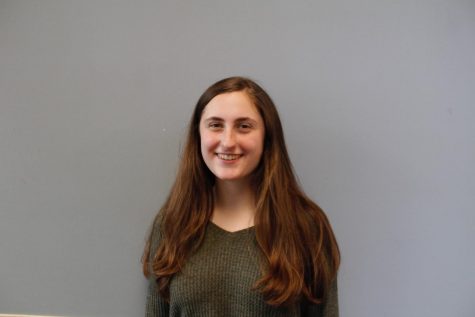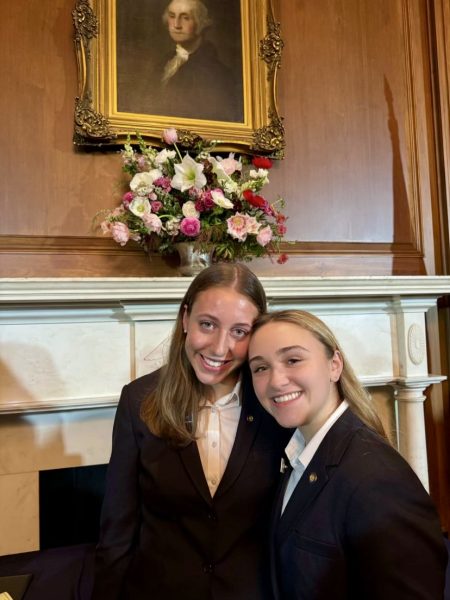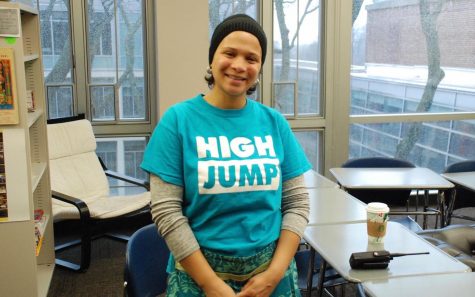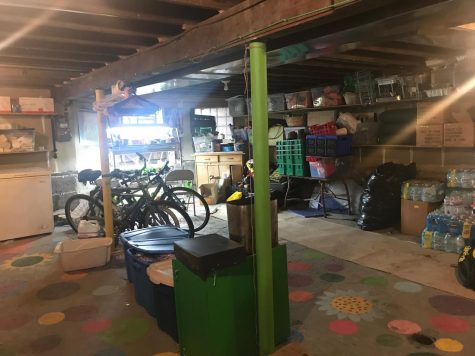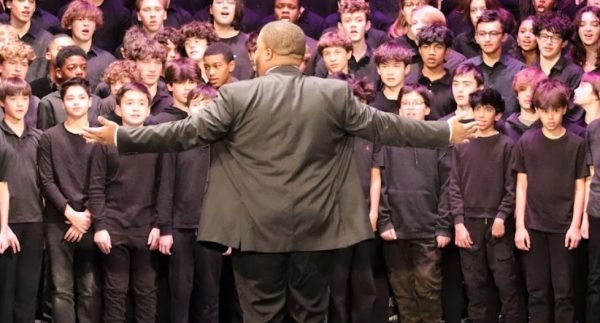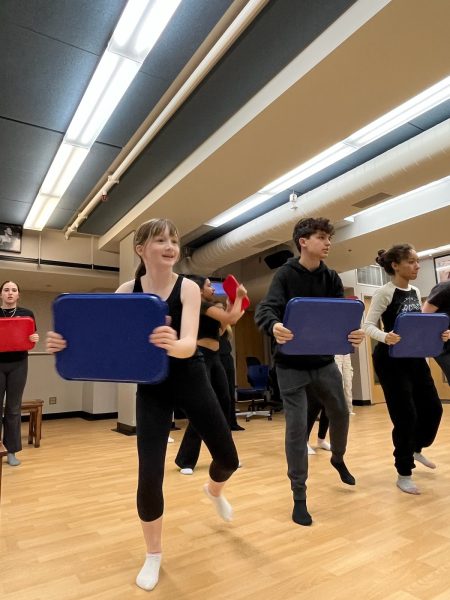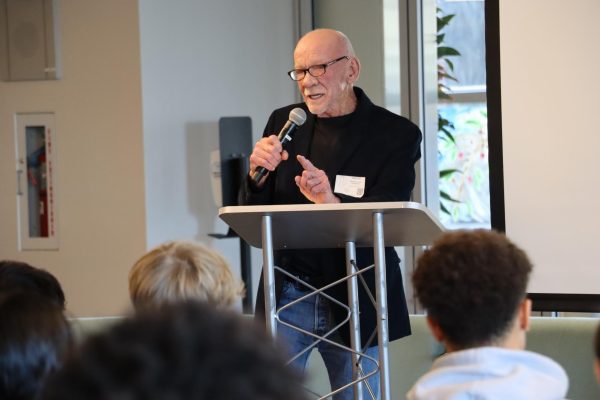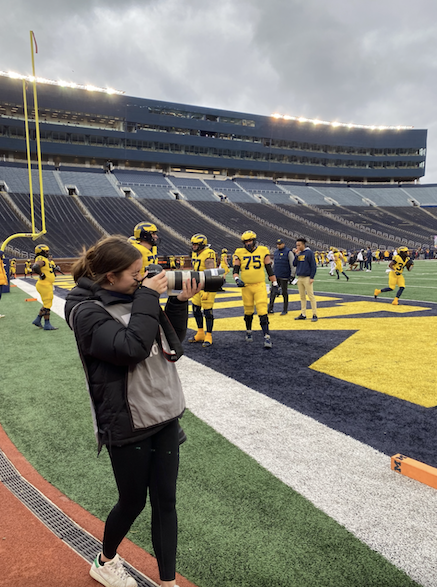Exploring Parker’s Backyard
The Judy Stock Butterfly Haven
Sunlight pours into the Judy Istock Butterfly Haven through its wide windows. Over 1,000 butterflies––some vibrantly colored, like the royal blue Common Morpho, others more subtle, like the brown Tawny Owl Butterfly––glide through the 2,700 square foot greenhouse, landing on orange, red, and pink flowers.
Visitors ranging from three-year-olds in the arms of their parents to elderly couples milling around the permanent exhibit at the Peggy Notebaert Nature Museum, only a few blocks from Parker.
2017 marks the 160th anniversary of the Chicago Academy of Sciences’ founding in 1857, making it the oldest natural history museum west of the Hudson River. The Butterfly Haven opened in 1999 along with the Academy’s current building at 2430 N. Cannon Drive.
Due to the Museum’s location, many Parker classes have gone on field trips to the Butterfly Haven. Third grader Ellie Palombo Schall, who went as a first grader, remembers her experience fondly. “The butterflies were really friendly,” she said. “They would always try to come up to you and land on you.”
The Academy’s Chief Curator Doug Taron said, “It’s easily our most popular exhibit.” The soft voiced and salt and pepper-haired Taron has worked at the Academy for 20 years and was originally hired to develop the Butterfly Haven. In the beginning, his roles included determining how plants would be incorporated into the exhibit, ensuring the exhibit had the right environmental conditions for the butterflies, securing permits from the U.S. Department of Agriculture to allow the Museum to possess butterflies, and making shipping arrangements with butterfly farms.
According to Taron, when the Haven first opened, it only displayed butterflies from the United States, mostly coming from Florida or Texas.
“We discovered that North American butterfly species don’t display very well,” Taron said. “They don’t fly very much, and they perch where you can’t see them. You don’t get much activity for the butterflies you have.”
To improve the quality of the exhibit, in 2002 the Museum started ordering butterflies from farms in other countries. Now it boasts licenses for over 200 species and displays around 40 at any given time, depending on availability. The Haven is also home to many species of small birds.
“My favorite memory in the Butterfly Haven was when we first started getting butterflies from around the world,” Taron said. “When we released our first few––I think one was a Swallowtail from Asia––I wasn’t expecting it to be as dramatic as it was. Even though the tropical butterflies were present in much smaller numbers, they were flying around and being more visible than a lot of our ones from the U.S. That’s when I knew that having tropical butterflies would make an enormous difference.”
Butterflies are delivered to the Museum as chrysalises since in that stage they don’t move or need to be fed. Upon arrival, the chrysalises are hung in neat rows inside glass cases located immediately outside the Haven’s exit. They remain inside until they complete metamorphosis, often a few days or weeks depending on the species.
At 2:00 pm on a March Saturday, five and six-year-olds crowded a wooden bench in the center of the Haven, where Programs Facilitator Julianna Crisanti stood with three volunteers behind a large, gray cage containing five butterflies. It was time for the daily Butterfly Release, when butterflies that just emerged from their chrysalises are freed into the exhibit.
“I love that I get to meet so many people,” Crisanti, who leads the Butterfly Releases on weekends, said. “When I get enthusiastic kids or parents, it’s so fulfilling.”
Interactions with visitors, especially children, are also important to Visitors Service Associate Robert Wells. One of his responsibilities is to guard the exit of the Haven and ensure that no butterflies are “hitchhiking” on visitors’ clothing as they leave the space. He turned to a mother and her daughter who were standing by the door and pointed out his favorite bird in the exhibit, the Red-Legged Honeycreeper, as it snacked on mealworms.
Local museum-goer Brent Ferguson held his three year old daughter, Lily, as they watched butterflies drinking juice from a watermelon slice beside the small Honeycreeper. According to Ferguson, they visit the Haven three or four times a year. Lily, who was wearing a bright pink butterfly dress, said, “I like watching the butterflies eat.”
The Butterfly Haven attracts visitors from out of town as well, including Mr. and Mrs. Hennessey from Canada. “We’ve been to a similar butterfly conservatory near Niagara Falls, and since we were in Chicago, we decided to come to this one,” Mr. Hennessy said. “I love seeing so many butterflies and experiencing nature because everything is so manufactured these days.”
According to Taron, most butterfly havens are similar because they replicate each other’s ideas. The Museum’s butterfly conservation program, run in addition to the Haven, is what differentiates it from other butterfly exhibits. The Museum raises native, endangered species for release onto prairie restoration projects.
“We go out into the field for a specific species that we want to start new populations of and collect a modest nutmber of female butterflies to bring back to our Conservation Lab,” Taron said. “We get the females to lay eggs — one female can lay hundreds, sometimes many hundreds of eggs — and rear the caterpillars up to release them into nature.”
Taron hopes that when visitors leave the Butterfly Haven, they will realize that butterflies are all around them. “Butterflies are a really good introduction to nature,” he said. “Even people who think they hate bugs like butterflies. I want to inspire visitors to say, ‘Now I’ve seen all these butterflies in the Haven, but there are also butterflies in my backyard and in my neighborhood.’”
